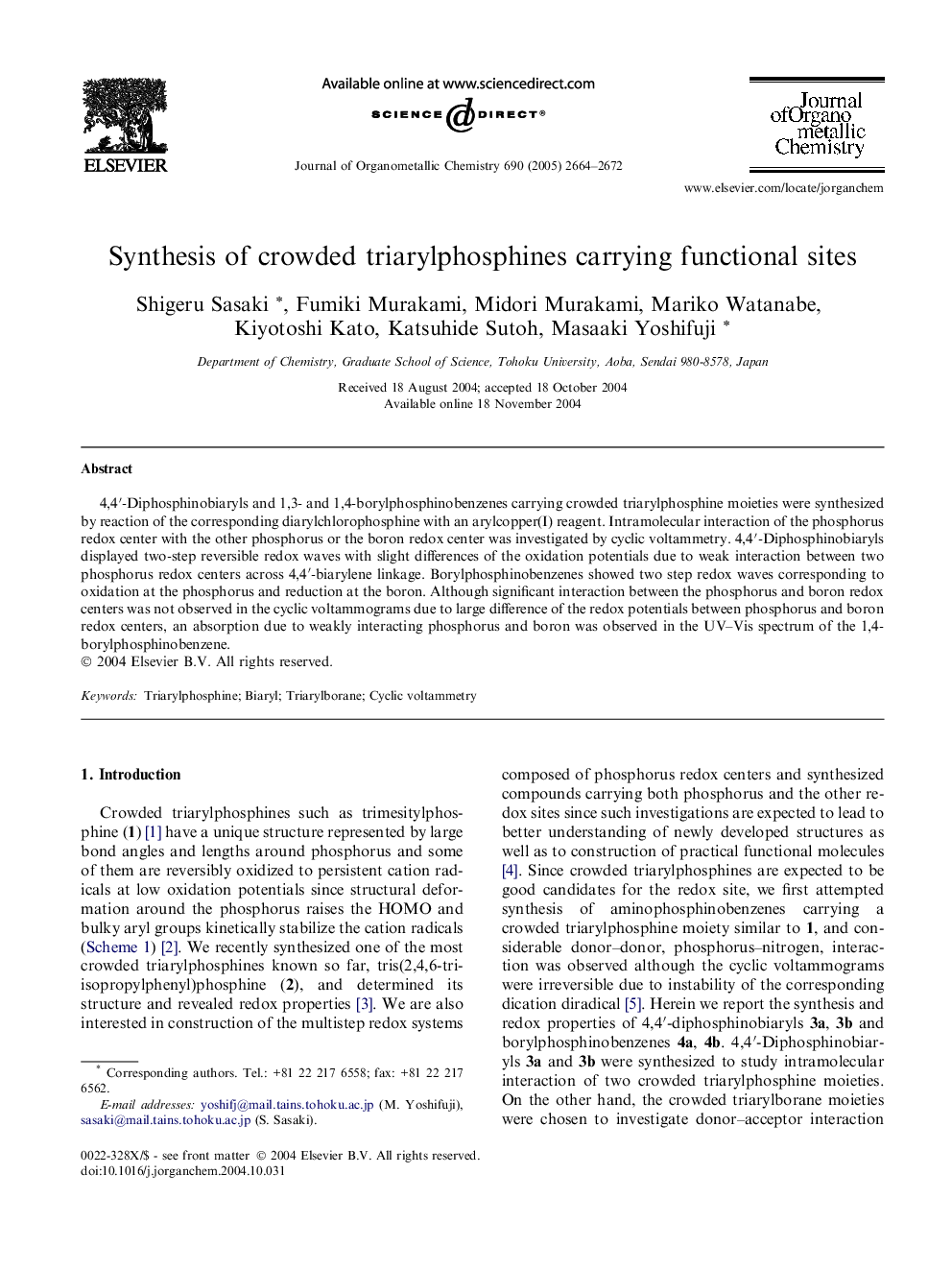| Article ID | Journal | Published Year | Pages | File Type |
|---|---|---|---|---|
| 1327483 | Journal of Organometallic Chemistry | 2005 | 9 Pages |
4,4′-Diphosphinobiaryls and 1,3- and 1,4-borylphosphinobenzenes carrying crowded triarylphosphine moieties were synthesized by reaction of the corresponding diarylchlorophosphine with an arylcopper(I) reagent. Intramolecular interaction of the phosphorus redox center with the other phosphorus or the boron redox center was investigated by cyclic voltammetry. 4,4′-Diphosphinobiaryls displayed two-step reversible redox waves with slight differences of the oxidation potentials due to weak interaction between two phosphorus redox centers across 4,4′-biarylene linkage. Borylphosphinobenzenes showed two step redox waves corresponding to oxidation at the phosphorus and reduction at the boron. Although significant interaction between the phosphorus and boron redox centers was not observed in the cyclic voltammograms due to large difference of the redox potentials between phosphorus and boron redox centers, an absorption due to weakly interacting phosphorus and boron was observed in the UV–Vis spectrum of the 1,4-borylphosphinobenzene.
Graphical abstract4,4′-Diphosphinobiaryls and borylphosphinobenzenes carrying crowded triarylphosphine moieties were synthesized. Two phosphorus atoms of 4,4′-diphosphinobiaryls were reversibly oxidized in two steps in spite of 4,4′-biarylene bridge. UV–Vis spectra of 1,4-borylphosphinobenzene suggested significant phosphorus–boron interaction.Figure optionsDownload full-size imageDownload as PowerPoint slide
